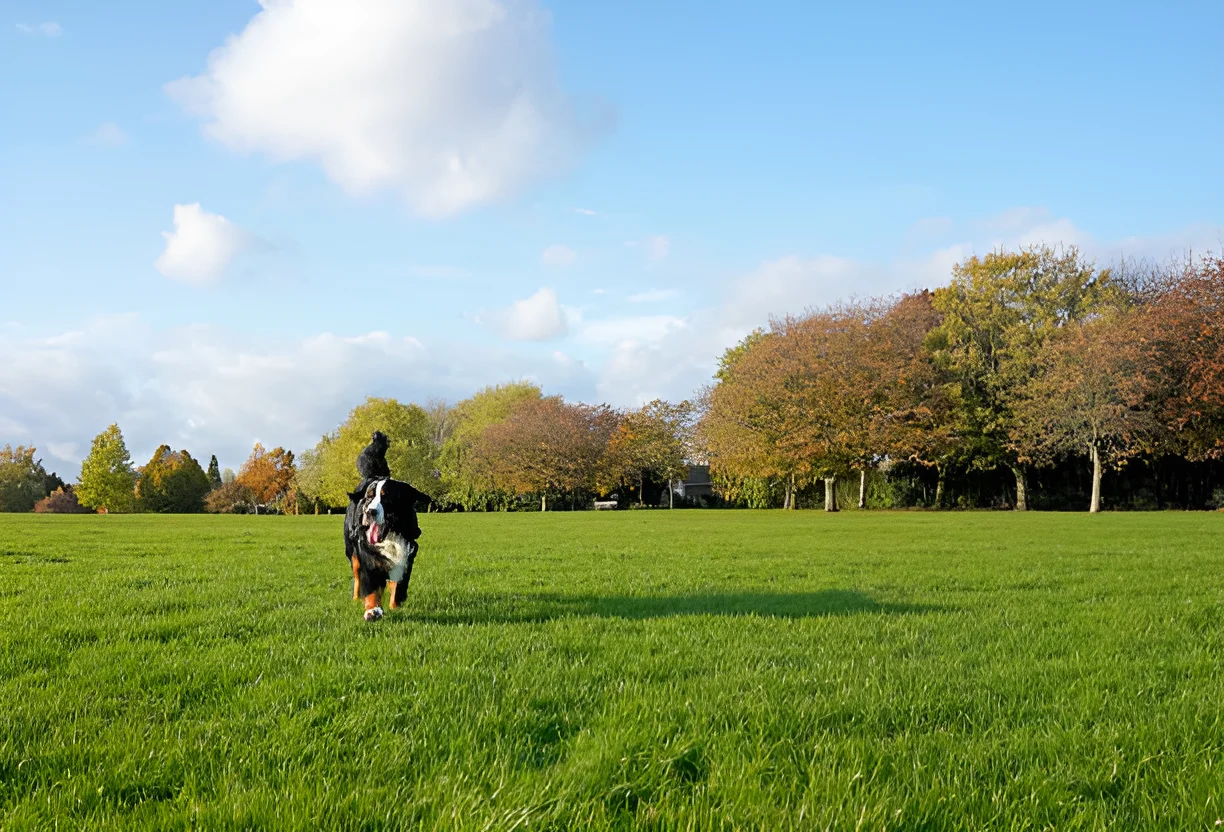Dogs should be at least 6 months old before they start training with an invisible fence to ensure they are physically and behaviorally mature enough to understand the boundaries and consequences. This comprehensive guide will explore the appropriate age for training, the benefits and challenges of using an invisible fence, and tips for successful training.
Invisible fences are a popular solution for pet owners who want to keep their dogs safe within a designated area without the need for physical barriers. These systems use a combination of buried wires, transmitters, and special collars to create an invisible boundary that dogs learn to respect. However, the effectiveness of an invisible fence largely depends on the dog’s age and training. This guide will delve into the ideal age for introducing a dog to an invisible fence, the training process, and how to ensure a positive experience for your pet.
Understanding Invisible Fences
How Invisible Fences Work
Invisible fences consist of a buried wire that creates a boundary around your yard. A transmitter sends a radio signal through the wire, which is picked up by a receiver collar worn by the dog. When the dog approaches the boundary, the collar emits a warning beep. If the dog continues to move closer, the collar delivers a mild static correction to deter them from crossing the boundary.
Benefits of Invisible Fences
- Aesthetic Appeal: Invisible fences maintain the open appearance of your yard without the need for physical barriers.
- Flexibility: These systems can be customized to fit any yard shape and size.
- Safety: Invisible fences can prevent dogs from wandering into dangerous areas or getting lost.
Appropriate Age for Training
Minimum Age Requirement
Most experts recommend that dogs should be at least 6 months old before starting training with an invisible fence. At this age, dogs are typically mature enough to understand the training and respond appropriately to the correction signals.
Factors to Consider
- Physical Development: Puppies younger than 6 months may not be physically developed enough to wear the collar comfortably or understand the training.
- Behavioral Maturity: Younger puppies often lack the attention span and impulse control needed for effective training. Waiting until they are older ensures they can focus and learn the boundaries.
Training Your Dog on an Invisible Fence
Step-by-Step Training Process
1. Introduction to the Boundary: Start by introducing your dog to the boundary flags that mark the invisible fence line. Walk your dog on a leash around the perimeter, allowing them to see and sniff the flags.
2. Association with the Warning Beep: Turn on the system and let your dog hear the warning beep as they approach the boundary. Reward them with treats and praise when they retreat from the boundary.
3. Introduction to Static Correction: Once your dog understands the warning beep, introduce the static correction. Allow your dog to approach the boundary and experience the correction. Immediately guide them back to the safe zone and reward them.
4. Reinforcement and Practice: Continue practicing with your dog on a leash, gradually increasing the distance and distractions. Consistent reinforcement and positive rewards will help your dog learn to respect the boundary.
5. Off-Leash Training: Once your dog reliably responds to the boundary on a leash, begin off-leash training in a controlled environment. Supervise your dog closely and continue to reinforce the training with rewards.
Tips for Successful Training
- Patience and Consistency: Training takes time and patience. Be consistent with your commands and rewards to help your dog understand the boundaries.
- Positive Reinforcement: Use treats, praise, and play to reward your dog for staying within the boundary. Positive reinforcement helps create a positive association with the invisible fence.
- Gradual Progression: Gradually increase the difficulty of the training by adding distractions and increasing the distance from the boundary. This helps your dog learn to respect the boundary in various situations.
Challenges and Considerations
Potential Challenges
- Fear and Anxiety: Some dogs may become fearful or anxious about the static correction. It’s important to monitor your dog’s reaction and adjust the training as needed to prevent fear-based behaviors.
- Consistency in Training: Inconsistent training can confuse your dog and make it harder for them to learn the boundaries. Ensure all family members follow the same training protocols.
- Maintenance and Monitoring: Regularly check the system to ensure it is functioning correctly. Replace batteries in the collar and inspect the boundary wire for damage.
Health and Safety Considerations
- Collar Fit: Ensure the collar fits properly and is not too tight or too loose. A poorly fitting collar can cause discomfort or fail to deliver the correction effectively.
- Health Conditions: Consult your veterinarian before using an invisible fence if your dog has any health conditions that could be affected by the static correction.
- Supervision: Always supervise your dog during the initial training period to ensure they are responding correctly and not experiencing undue stress.
Conclusion
Training a dog to use an invisible fence can be an effective way to keep them safe within a designated area. Dogs should be at least 6 months old before starting training to ensure they are physically and behaviorally mature enough to understand the boundaries and consequences. By following a structured training process, using positive reinforcement, and addressing any challenges that arise, you can help your dog learn to respect the invisible fence and enjoy the freedom of a safe yard.
The photo featured below the post headline is Credit: Kriste Sorokaite/istockphoto
I hope you find this post helpful and informative. If Yes’ feel free to share it with your friends!
Frequently Asked Questions
How old does a dog have to be to use an invisible fence?
Dogs should be at least 6 months old before starting training with an invisible fence to ensure they are physically and behaviorally mature enough to understand the boundaries and consequences.
What are the benefits of using an invisible fence?
Benefits include maintaining the open appearance of your yard, flexibility in fitting any yard shape and size, and preventing dogs from wandering into dangerous areas.
How do I train my dog to use an invisible fence?
Start by introducing your dog to the boundary flags, associating the warning beep with the boundary, introducing static correction, and reinforcing the training with positive rewards.
What challenges might I face when training my dog on an invisible fence?
Potential challenges include fear and anxiety, inconsistent training, and the need for regular maintenance and monitoring of the system.
Are there any health and safety considerations for using an invisible fence?
Ensure the collar fits properly, consult your veterinarian if your dog has health conditions, and always supervise your dog during the initial training period.

